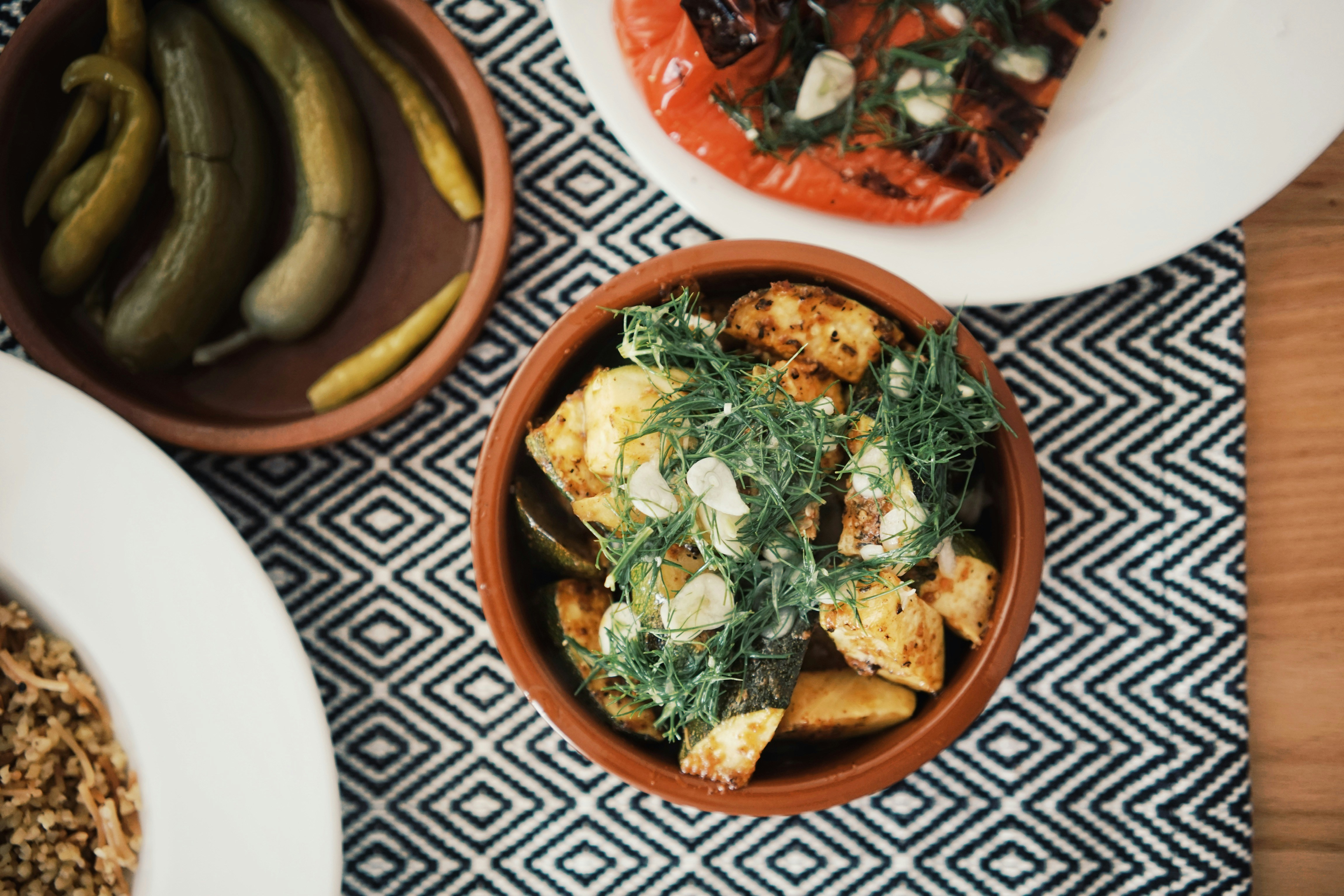Spicing Up Your Kitchen: An Exploration of Moroccan Cuisine
Moroccan cuisine, a vibrant and flavorful culinary tradition, is renowned for its unique blend of Mediterranean, Arabic, Andalusian, and Berber influences. Through an exploration of this rich culinary landscape, we will uncover the secrets behind its mouthwatering dishes and inspire you to bring a touch of Moroccan magic to your kitchen.

The Heart of Moroccan Cuisine: Spices and Aromatics
Moroccan cuisine is characterized by its vibrant and intricate blend of spices. Each dish is an aromatic symphony, with ingredients like saffron, cumin, coriander, and cinnamon taking center stage. These spices not only provide depth and complexity to the dishes, but they also offer a host of health benefits. Exploring these culinary treasures can add a new dimension to your cooking, transforming even the simplest of meals into a Moroccan feast.
The Art of Tagine: Cooking in a Moroccan Clay Pot
Tagine, a slow-cooked stew named after the conical clay pot it’s cooked in, is a staple of Moroccan cuisine. It combines meat, vegetables, and an array of spices, resulting in a dish that is both comforting and exotic. The unique shape of the tagine pot helps to circulate heat and moisture, creating tender, flavorful dishes that highlight the ingredients’ natural sweetness. Learning how to use a tagine can open up a world of culinary possibilities.
Bread and Beyond: A Look at Moroccan Staples
Bread holds a sacred place in Moroccan cuisine. From the hearty, whole-grain khobz to the delicate, crepe-like msemen, each variety has its own characteristics and uses. Beyond bread, Moroccan staples like couscous and preserved lemons are central to many dishes, offering unique textures and flavors. Incorporating these staples into your cooking repertoire can help you recreate authentic Moroccan flavors at home.
-
Moroccan bread, or khobz, is traditionally baked in a communal oven.
-
Couscous is a type of semolina that is often served with vegetables and meat.
-
Preserved lemons are a key ingredient in many Moroccan dishes, adding a tangy, salty flavor.
The Sweet Side of Morocco: Pastries and Desserts
Moroccan cuisine is not just about savory dishes. The country’s pastries and desserts, often flavored with honey, almonds, and spices, are equally important. From the flaky, almond-filled pastries called gazelle’s horns to the sweet, orange blossom-infused custard known as seffa medfouna, Moroccan desserts are a delightful way to end a meal. Exploring these sweet treats can add an exotic touch to your dessert table.
Moroccan Beverages: Mint Tea and Beyond
No exploration of Moroccan cuisine would be complete without mentioning its iconic mint tea. This sweet, fragrant beverage is a symbol of Moroccan hospitality and is often served throughout the day. Beyond mint tea, beverages like spiced coffee and almond milk are also popular. These beverages, each with their unique flavor profiles, can add a refreshing twist to your drink selection.
In conclusion, Moroccan cuisine, with its vibrant flavors, unique cooking techniques, and diverse ingredients, offers a captivating culinary adventure. By exploring its rich traditions and incorporating its distinctive elements into your kitchen, you can add a touch of Moroccan magic to your meals, taking your culinary experiences to exciting new heights.




